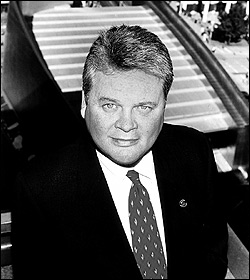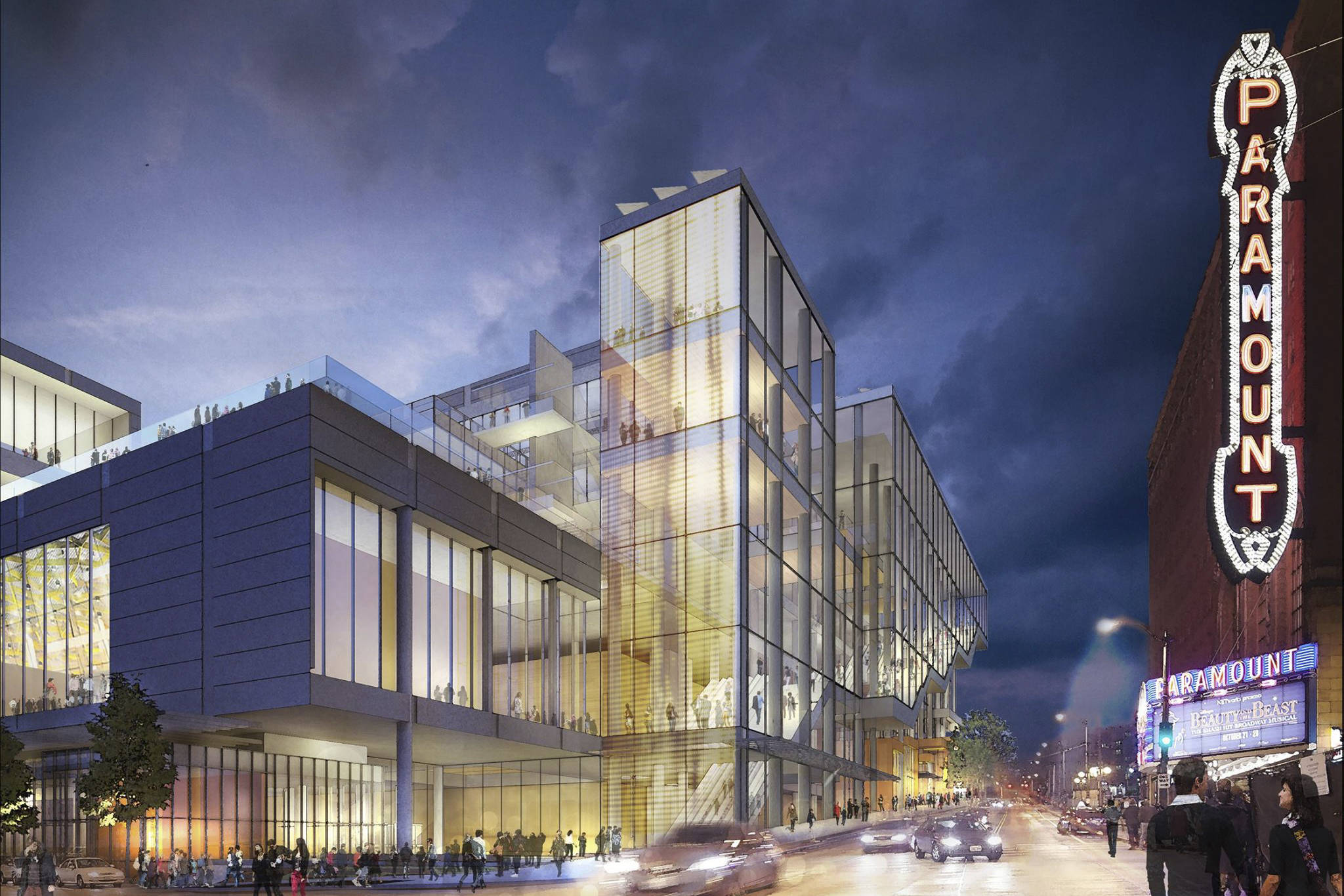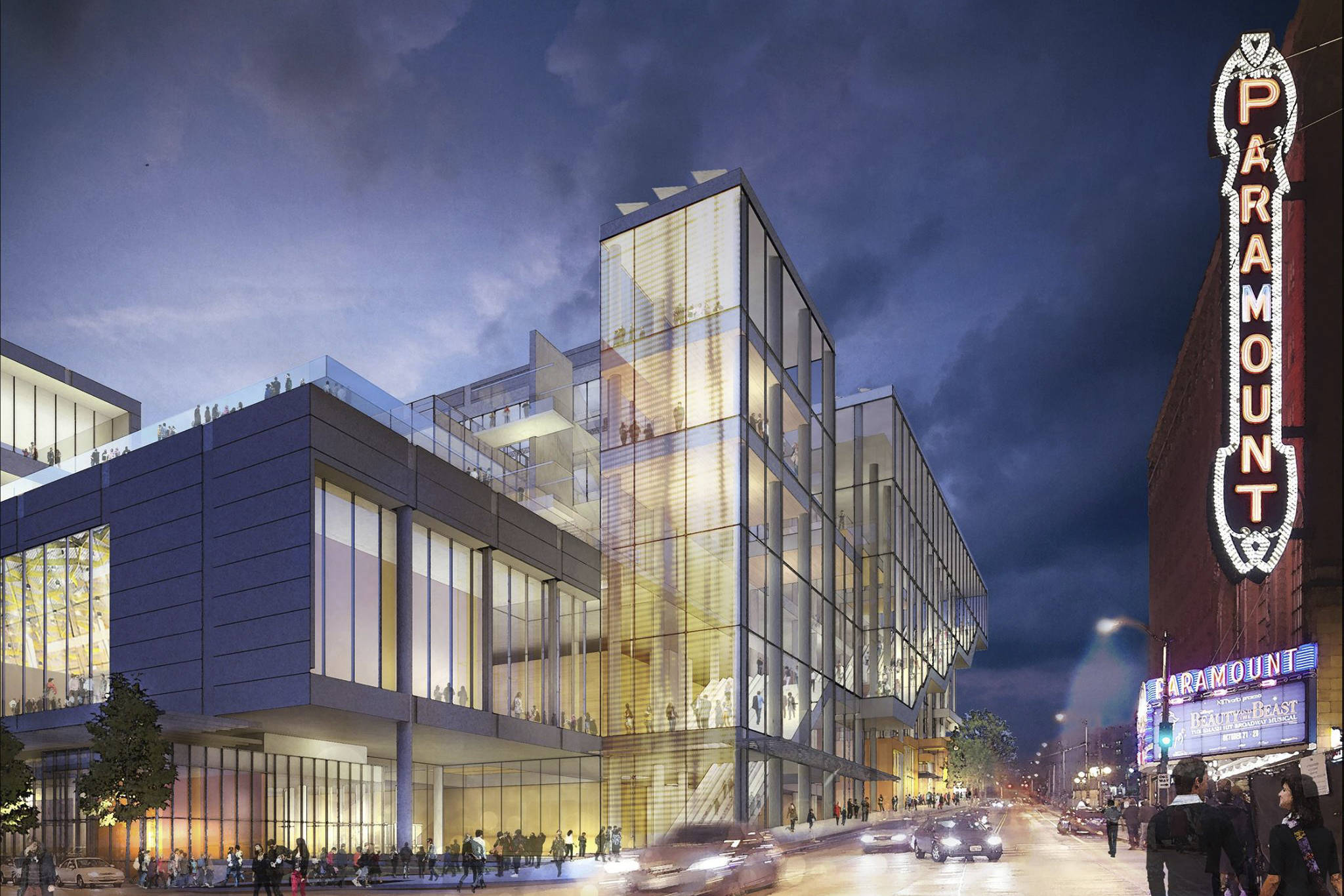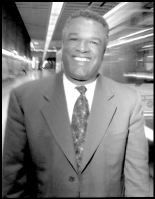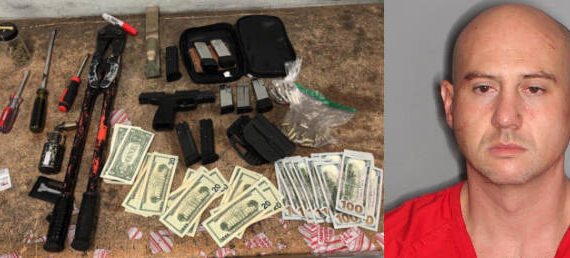In the past month, Mayor Greg Nickels demonstrated why it is so dangerous for powerful executives to be unchallenged. Since no one has stepped up to run against him in 2005, the mayor has started to make mischief for Seattle City Council member Richard Conlin—a thoughtful critic of Nickels’ runaway development agenda. In addition, Nickels demonstrated how deaf a politician without a challenger can be when he declared his intention to shake $1 billion out of the federal government so the city can bury the Alaskan Way Viaduct. Democratic U.S. Sen. Patty Murray, a champion of transportation funding for the state who rarely uses the media to communicate with individuals, sent the message that such a request was not merely impossible but very, very impossible. Nickels is showing the signs of executive hubris and overreach—and somebody needs to serve him a reality sandwich by mounting a serious campaign against him.
On Jan. 12, Casey Corr announced he would leave his post as mayoral communications director and run against Conlin, principally because the council member has been too slow to implement Nickels’ agenda.
Since Conlin took over as City Council transportation chair three years ago, he has distinguished himself as someone who pursues the public interest through dogged, careful review. Conlin doesn’t seek headlines and prefers compromise to outright opposition. He has closely scrutinized all of the mayor’s major transportation initiatives. The mayor wants to pour hundreds of millions of dollars into the South Lake Union neighborhood to fulfill the transportation dreams of billionaire Paul Allen, who wants to turn the area into a biotech hub. The two principal proposals by the mayor and Allen are a $45 million, 1.3-mile streetcar and a $250 million transformation of Mercer Street into a two-way boulevard. Both projects are moving forward, despite glaring flaws, but Conlin has quietly worked to improve them. He says Nickels often sends projects to the City Council that need a lot of work. “They often come to us without a lot of thought or public involvement,” says Conlin.
Conlin, who epitomizes Northwest nice, seems genuinely surprised to have a mayoral staff member running against him. He says his efforts to take public input and subject Nickels’ proposal to legislative scrutiny have stirred up resentment from the mayor’s staff. “That seems to be something that really bothers them,” says Conlin.
It is a Seattle tradition that mayors do not get involved in City Council races. As Conlin puts it, “I don’t think the electorate will be happy with a City Council that is 100 percent rubber stamp for any mayor.” Nickels broke this tradition in 2003 when he successfully opposed the re-election of renters’ rights advocate and City Council member Judy Nicastro, who lost to Jean Godden (see “The Mayor’s Machine,” June 11, 2003). This time around, not only is Nickels opposing a council incumbent, a member of his own staff has become an opposition candidate. It is as brazen an act of raw political power as Seattle has seen in decades.
Corr denies the mayor has orchestrated his challenge. “This is my decision,” he says. “I picked Richard Conlin because he is the anti-transportation transportation chair. Let me make my case.”
For nearly 19 years, Corr worked at daily newspapers in Seattle as a reporter, columnist, and editorial writer. He was a terrific journalist who wrote intelligent pieces about the intersection of political and business power in Seattle. He was a fierce critic of former Mayor Paul Schell, especially over fishy public-private partnerships like the long-term lease of Beacon Hill’s historic PacMed medical center to developer Wright Runstad.
It is, therefore, ironic to find him touting the benefits of government assistance for Allen’s development in South Lake Union. Corr says, “I don’t see those as subsidies to Paul Allen. South Lake Union is the biggest economic opportunity for Seattle in a generation. It’s as big as Bill Gates writing software or Bill Boeing building airplanes.”
Deputy Mayor Tim “The Shark” Ceis also emphasizes that the mayor did not encourage Corr to run against Conlin. “I’ve known Casey for a long time,” says Ceis. “He’s always played around with the idea of running for City Council.”
Ceis also downplays the political importance of Nickels backing Corr’s run against Conlin. “The mayor will be supporting a mixture of both incumbents and challengers,” he says. While Ceis acknowledges that recent mayors have not gotten involved in City Council races, he explains, “This mayor has a different political perspective.”
The mayor also has a difference with the state’s senior senator over the possibility of getting $1 billion from the federal government to bury the Alaskan Way Viaduct in a tunnel along the waterfront. There’s no argument that the viaduct’s physical deterioration is a real hazard for the 110,000 vehicles that use it daily. Both Murray and Nickels want to replace the aging four-mile elevated state highway, but money is a problem. On Dec. 6, Nickels announced that he preferred the $4.1 billion tunnel option instead of simply rebuilding an elevated structure for $2.7 billion to $3.1 billion. Legislators have made it clear that the state will not pay the extra cost of a tunnel, and Nickels hoped to get $1 billion from the federal government. On Jan. 19, Murray called reporters into her office for a standard press briefing before the opening of Congress. She made it clear that not only would the feds not deliver $1 billion, but also that she first read of the request in the newspapers.
Says Ceis, “I was a little taken aback by the statement that she had only read about it in the paper,” he says. “We’ve been communicating regularly with them.” Ceis says city lobbyists had talked about the request with Murray’s staff.
Murray press secretary Alex Glass sees it a little differently: “This particular request is not possible. It was not communicated directly to Sen. Murray.” Glass emphasizes that there is not an ongoing communications problem between the mayor and the state’s senior senator but rather a very specific problem over viaduct funding. “One billion in extra money doesn’t exist,” says Glass. “Anything close to that would prohibit Sen. Murray from getting any money for any other transportation project in Washington.” While Murray is not taking a position on the design wisdom of the tunnel option, she doesn’t sound exactly enthusiastic. Glass says, “They have chosen the most expensive option, which makes the task here more difficult.” State legislators have delivered a very similar message from Olympia.
Ceis says the mayor is not giving up, nor does he have unrealistic expectations. “We don’t need it all at once,” he says. “We are going to be sitting down this coming week and talking to her staff about it. There is hardly a major project in the state that doesn’t get some federal participation.”
Clearly, Nickels did not line up support from the state’s most important federal player when he made his decision to pursue the tunnel. The same kind of hubris that allows an administration to try to take out its political opponents infects its communications.
Ceis says the two things are not connected: “That’s a stretch between the senator and running candidates for City Council.” Ceis says someone will run against the mayor eventually. “We’ll have an opponent of some kind,” he predicts.
The fact that come November there will be a name on the ballot next to Nickels’ is beside the point. Just ask Richard Conlin. “I’ve had people ask me: ‘If I contribute to you, will there be retaliation by the mayor’s office?’ It’s very sad people have reached that point,” says Conlin.
